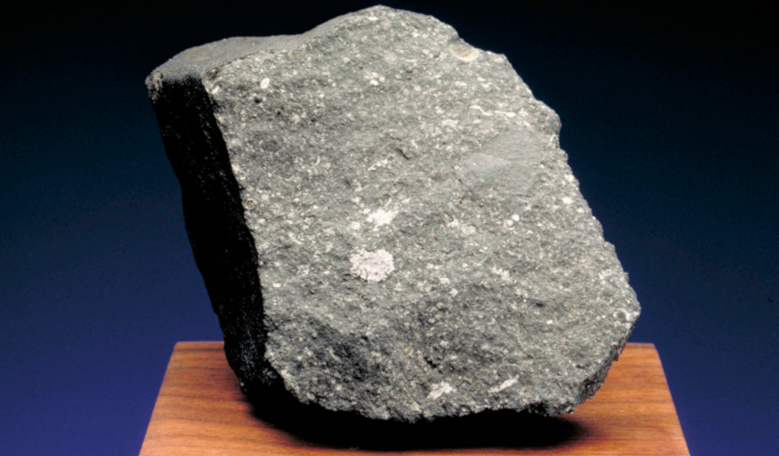A tiny ancient grain contained within a meteorite that crashed to Earth in the 60s is proving so surprising, it could force scientists to revise what they think conditions were like in the early solar nebula.
Our Solar System is around 4.6 billion years old. It grew from a gigantic cloud filled with gas and dust and matter from the outflows and cooling gases of earlier stars, collapsed under gravity into a disk called a solar nebula. This nebula then provided a nursery for our own growing baby Sun to form at its centre and enough building block material to kick start the formation of the planets.
Heat and radiation given off by the evolving Sun and constant collisions of rock and dust transformed a lot of the original material in the nebula, but some of it has remained unchanged and some of it has found its way to Earth over the years.
These tiny bits of preserved solid interstellar material are called presolar grains and scientists know they originated from earlier stars before our Sun was born, because the elements inside them have different isotopic compositions that reflect the nucleosynthetic processes that were occurring in that parent star.
As such, these minute granules are coveted by scientists as they are a window into conditions in the early Solar System.
It is generally excepted that the fragile nature of presolar grains means they could not survive intact and unchanged near the scorching temperatures near the Sun, so researchers expect to find them either in fine-grained material that formed in low temperatures or around the outside of chondrules; small, rounded particles embedded in most stony meteorites called chondrites.
But a new study by researchers at Washington University in St. Louis, have found them where they are not expected to be; in an inclusion or a chunk within a meteorite, called a calcium-aluminum-rich inclusion (CAI) and according to current theory CAIs are one of the first solids to have condensed in the solar nebula close to the Sun at temperatures above 1,500 K.
The fact that the presolar grains have been found at all is surprising, but finding them incorporated into a CAI is an eye-opener says Olga Pravdivtseva, research associate professor of physics in Arts & Sciences and lead author of a new paper in
"Following our current understanding of solar system formation, presolar grains could not survive in the environment where these inclusions are formed,” Pravdivtseva says.
These presolar grains are made up of SiC (silicon carbide) and they have been found in a CAI called Curious Marie, named after the famous chemist Marie Curie. The inclusion itself is encompassed within the Allende meteorite – the largest carbonaceous chondrite ever found on Earth.
The meteorite has undergone many scientific study before, but this is the first time that presolar grains have been found.
To find the grains, Pravdivtseva and colleagues heated up a tiny sample of Curious Marie, where they identified the noble gas signatures of SiC inside the CAI.
The fact that SiC is present in refractory inclusions and was not completely destroyed in Curious Marie can help us to understand this environment a little bit better, says Pravdivtseva.
This puzzling mix of chemicals – SiC in fine-grained CAIs – suggests that a population of small grains formed at special conditions or that not all CAIs were formed in quite the same way.
Either way, “this finding forces us to revise how we see the conditions in the early solar nebula,” says Pravdivtseva.











